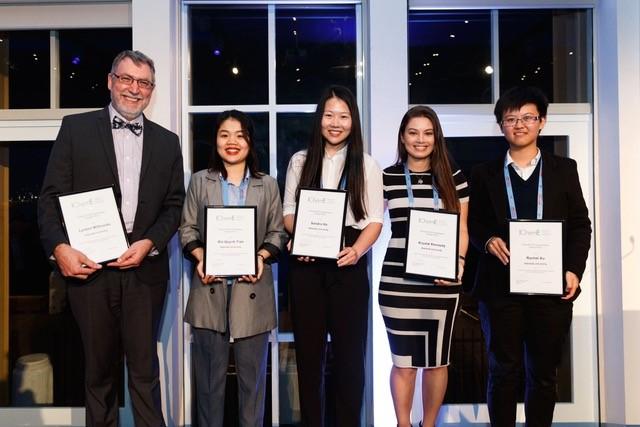Picking university courses in Year 12 can be overwhelming. For Rachael Xu, a consultant at Energetics and Project Manager for an award-winning University of Adelaide plant design team, it was a choice between engineering disciplines.
But which one?
“I asked my dad and he was like, ‘You should do chemical engineering, because it’s more versatile. You’ll have the best opportunities to find a job after you graduate,’” she told create.
Opportunity knocked right away, and a job offer — at Energetics — came just three hours after Xu’s final exam.
“I didn’t get much of a break,” Xu said, who moved to Sydney to take the role.
Her plant design group project resulted in another pleasant surprise: the 2019 IChemE Australasian Design Prize, judged on final-year projects from Australian and New Zealand universities’ chemical engineering departments.
The prize for the seven-member — six plus mentor Lynton Willcocks — University of Adelaide team’s project, Carbon capture and sequestration facilities for a gas processing plant, was awarded at the Chemeca 2019 event in Sydney.
The 440-page report included a feasibility study and detailed engineering for carbon capture at Northern Energy Limited’s South Australian natural gas processing plant. A solution with an estimated 90 per cent effectiveness in CO2 capture was created, which would capture, dry and compress much of 900 ktpa of carbon from the atmosphere, and inject this back into the depleted wells.
Teams for the project were randomly assigned, which Xu said was a first at the university. Previously, teams were assembled based by linking up students with similar grade point average results.
“Basically every group had someone with a really high GPA, a few people with middle and few from down the bottom, so every single group had the same average GPA,” she added.
Capture the prize
One contributor to the team’s success was an equitable division of work over the 14 weeks, according to Xu. While other teams were pulling all-nighters or having certain members do an uneven amount of lifting, her team behaved like, well, a team.
“It wasn’t, you know, rainbows from the beginning, but we fell into our individual roles very quickly; within two or three weeks we were working together really well,” she recalled.
“Every time we were at uni working on this project, all six of us were there. Whereas for many of the other teams, it was just one or two people who were doing the heavy carrying that showed up.”
Following a literature review, technology lectures and calculations came equipment design. Xu said this was probably the most challenging part.
“Especially because we had to go through it and make sure everyone followed the same method and that everyone had done the calculations correctly and made their spreadsheets correctly,” she said.
“The way we handled all those hundreds of pages of data was one person got put in charge of developing the spreadsheet for each piece of equipment. One person would do the spreadsheet for pumps, one person would do the spreadsheet for knock-out drum, etc. And then everyone would use that same spreadsheet.”

Willcocks, Principal Process Engineer at Terra Nimbus, would meet with the team once a week. He described their report as mature and comprehensive, including its conclusion that the current economics discourage private investment in such a carbon capture and sequestration (CCS) project.
“Private investment and government assistance will be needed to get CCS implemented at scale to make a significant difference to our carbon emissions — if that is indeed what this country truly wants,” Willcocks told create.
Pricing for the future
According to the project’s analysis, a carbon price of $37.50 per tonne would be required for it to be viable. Without a price, the project would be unviable to the tune of “hundreds of millions,” according to Xu.
Willcocks said the report was “top quality,” and he is “pleased for them that this indeed took place, and now they get the recognition and reward for all the hard work, and can take that success with them into their careers.”
Of her nascent career, Xu said she had not thought about it in a lot of detail, but that though she did not feel drawn to academia, she greatly enjoys and is strong in research.
“Maybe after I spend some time in the professional world I’ll get tired of it and go back to uni and work as an academic,” she said.
“Who knows? At this point it’s really a big ‘who knows?’”